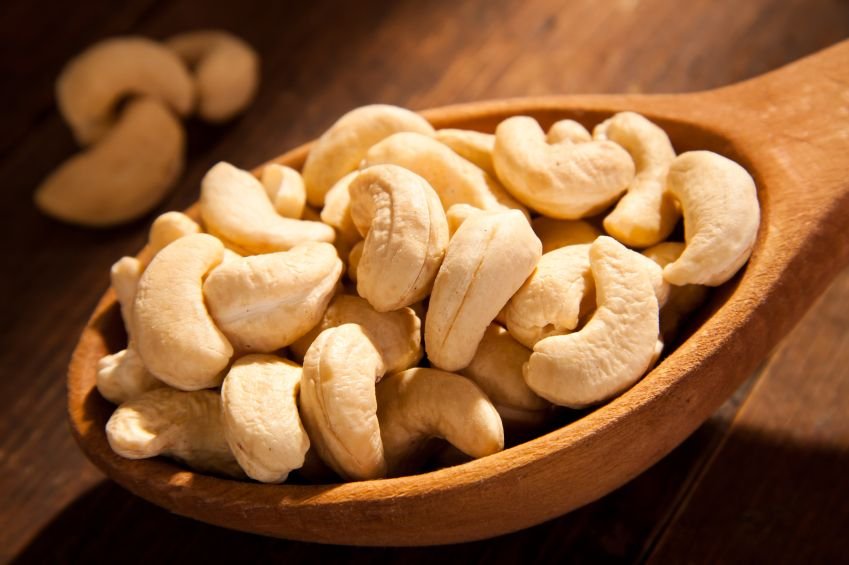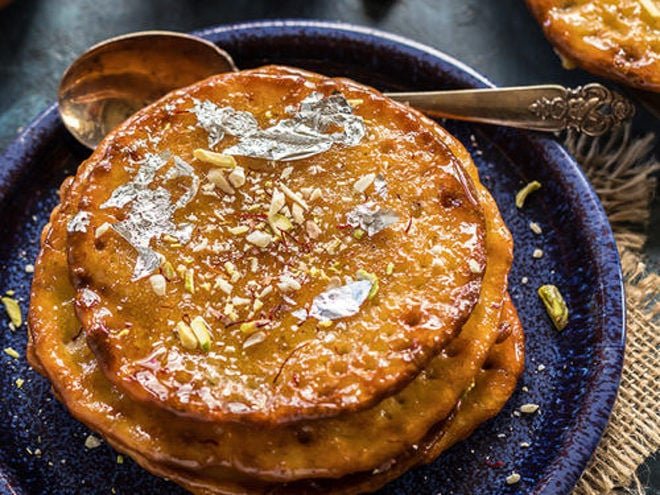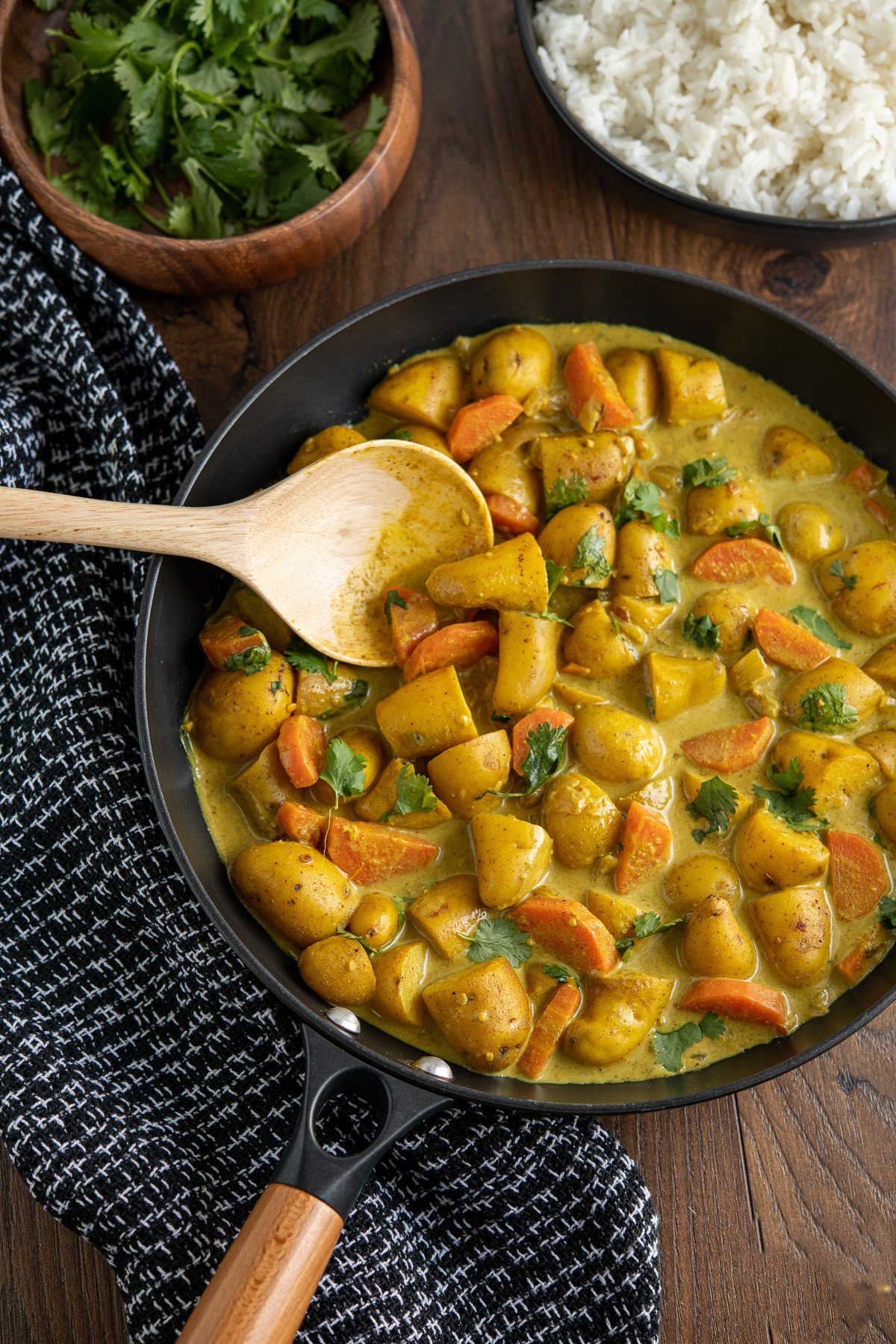Ingredient Ideology | Holistic Cooking By: Dr. Kaviraj Khialani- Celebrity Master Chef.
/From Ayurvedic Principles To Sattvic Culinary Trends!
The world today is going through unprecedented times and with the ongoing pandemic era it becomes imperative and indispensable for all of us to make health our top most priority from eating wise, staying fit and boosting up our immunity levels to keeping a positive mind for better days to come. Ayurveda is best described as “Living in Harmony with the Laws of Nature!”
The trend today is somewhat going back to the olden styles of cooking and one of them is Ayurveda. It is considered by many scholars to be the oldest healing science. Ayurveda is said to contain a Wealth of Knowledge or Science of Healthy Living. In Sanskrit the word has been explained as Science of Life!
This knowledge of Ayurveda originated in India over 5000 years ago and is often referred to as “mother of all healing “we have all heard that you are what you eat, the basis of Ayurveda in cooking is that we are the result of not only what we eat but also when, how and why we eat? Ayurveda is derived from two Sanskrit root words – Ayu – which means life & Veda which means the knowledge.
I came across a lot of people not only from the food industry but even generally looking for ideas and suggestions if this would be one of the next best things coming back into the trend for the foodies, and yes professional acceptance and the need to explore more shows positive results of it coming back in vogue!
Ayurveda style is a balanced approach to eating that suggests we eat mindfully, healthfully and with gratitude. Our foods should be fresh, digestible, prepared with a lot of love and care and should be able to satisfy all our senses. We should be eating a variety of foods and spices that are aromatic, visually appealing and flavorful. It encompasses the healing of body, mind and spirit through a diet lifestyle – including yoga and meditation.
Experts suggest, Bringing Ancient Ayurvedic cooking principles into our homes, food businesses as well & transform everyday ingredients into dishes to balance your mind, body and soul. The medicinal philosophy of Ayurveda has deep roots in the Indian subcontinent, Eating and cooking meals that do right by your dosha can help the Mind, Body and Soul feel sound.
On a broader note, Holistic Nutrition is the modern natural approach to developing a healthy balanced diet while taking into account the person as whole. Holistic nutrition is considered to be part of holistic health. Holistic health is an approach to treating a person’s well-being by taking into consideration all aspects of life, therefore this topic becomes all the more important for us to understand.
What does Ayurveda say about food & its classification?
One of the many ways of classifying foods in Ayurveda is based on Rasa- which means there are basically six major tastes namely: Bitter, Astringent, Sweet, Sour, Spicy, Salty.
Ayurveda has 3 main Holistic Focuses:
1. Healing: Ayurveda style of foods are holistic and appetizing, flavorful, aromatic and a way of offering love, belonging and healing when being served in an inspiring atmosphere.
2. Prevention: we have ever since heard about “prevention is better than cure” and that’s what it truly means to follow a proper diet being carefully planned and executed, consumed the right way can keep us all away from treatments.
3. Healthcare: today this word has gained maximum recognition and support, appreciation and regard due to its untiring efforts in keeping us alive. Similarly, Ayurveda talks about living a life in a healthy manner, as well as rejuvenation and methods to achieve longevity.
How does Ayurvedic Cooking Style function?
Ayurveda can provide great insights about which foods will suit and balance you according to your constitution, dosha, imbalance and season.
It works on a principle that every individual is unique in how he or she responds to food.
Ayurvedic cooking advices eating fresh picked foods as it provides maximum amount of energy.
It does not encourage eating or consuming leftovers or processed foods as a daily habit as they lack vital energy.
How does Ayurveda categories the foods in 3 ways?
1. SATTVA – it also means Sattvic, Sattva is a quality of mind which induces clarity, harmony and balance. This food is light, pure, rich in prana-life force! it purified the body and calms the mind and helps restore harmony and balance between the body and mind.
The following foods promote sattva- fresh fruits and vegetables, salads, fresh fruit juice, cereals like red rice, herbal tea, fresh cow milk, dry fruits, nuts, honey, jaggery, all spices and freshly cooked food.
2. RAJAS- it also means Rajasic, Rajas means a quality of mind which induces energy and action, the need to create. The following foods promote rajas- ready to eat canned foods, basmati rice, paneer, sour cream, ice- creams, yeast, sugar, pickle, vinegar, garlic and salted foods.
3. TAMAS- it also means Tamasic, Tamas means a quality of mind which evokes darkness, inertia, resistance and grounding. The need to stop. The following foods promote Tamas- alcohol, beef, chicken, fish, pork, eggs, frozen foods, mushrooms, tea, coffee, fried foods, fried nutsHowever, it must be noted that the Rajasic and Tamasic foods when consumed unwisely or not in proportion can create imbalance in the body and increase toxins in the body and can be harmful if not conditioned well in their consumption.
5 Elements which make up the universe as per Ayurveda!
According to Ayurveda, we have the following 5 Elements which constitute the Universe as under:
1. Earth- Prithvi.
2. Water- Jal.
3. Fire- Agni.
4. Wind- Vayu.
5. Space- Akash.
These elements are believed to form 3 different Doshas which are defined as types of energy that circulates within the body which are called Vata Dosha- wind energy, Pita Dosha- fire energy, Kapha Dosha- water energy, which needs to be looked at and accordingly have our foods customized to meet the needs.
10 Benefits of Cooking the Ayurveda Style- Holistic Approach:
1. It offers a sense of well-being, better mood control.
2. It helps boost immunity and increase energy levels in our body.
3. It helps increase life span of an individual and improves bodily functions.
4. It helps relaxing- rejuvenating and revitalizing and feeling comfy with oneself.
5. It helps maintain a healthy weight, reduces diseases and makes our body strong without any side effects.
6. It recommends eating food easily available, on toxic and aids in healing all through.
7. It helps us to have a positive state of mind.
8. It gives guidance to adjust our lifestyle based on changing seasons.
9. It helps us overcome depression and anxiety issues.
10. it helps us sustain our self-better and being more calm.
THE TREND OF SATTVIC COOKING:
According to Bhagavad Gita, Sattvic Food gives life, purity, strength, health, joy, and cheerfulness!
We have come across this term Sattvic Cooking in recent times yet again with a lot of people changing their eating and cooking styles and including this method in their day to day life which truly in a positive sense means a lot. The word sattvic means- “Pure Essence” and it is a style of cooking which is a purely vegetarian one which includes lots of fresh fruits, loads of fresh vegetables, pulses, sprouts, whole grains, seeds, honey, nuts, milk and dairy which are free from animal rennet.
These foods raise our sattva or our consciousness levels as discussed earlier, a person consuming this kind of food is said to be more calm, peaceful and serene. He is amicable, full of enthusiasm, hope, aspirations, energetic, creative and overall is a balanced personality.
Sattvic foods are cooked with lot of love and eaten with a lot of gratitude being offered to the almighty. An added advantage of this cooking style is that it keeps our weight in check and it’s also regarded as an effective way to weight loss. But we must remember the golden rule that all sattvic foods will become tamasic when over processed, kept for a very long time or incase deep fried, hence a little care here should be taken.
A few fundamentals of cooking the Sattvic Style also termed as Yogic Cooking Style:
Sattvic Food is also regarded as the best source for Superfoods in India since it is always freshly made and along with the body it also nourishes the mind. Sattvic food is also referred to as Yogic Cooking Style and has many health inducing properties. Fresh fruits, dry fruits, grains and legumes like rice and dal, milk and milk products are all examples of sattvic foods.
Eating Sattvic Food promotes the three necessary ingredients for vitality ojas (responsible for overall health, energy, immunity and liveliness) tejas (intelligence) and prana (energy levels). Food cooked according to the principles of sattva guna is devoid of meat, fish, eggs, alcohol, onions and garlic. Vegetables, fruits, grains, milk and milk products play a major role in Sattvic Cuisine.
A guide for Beginners on what to include in Sattvic Cooking:
Vegetables: spinach, carrots, celery, potatoes, lettuce, peas, cauliflower are good to be included.
Fruits & Juices: apples, bananas, papaya, mangoes, cherries, melons, peaches, guava, fresh fruit juices.
Sprouted Grains: barley, amaranth, bulgur, barley, millet, quinoa, wild rice.
Nuts, Seeds & Coconut: walnuts, pumpkin seeds, sunflower seeds, sesame seeds, unsweetened coconut, flax seeds.
Fats & Oils - Non-Dairy Products: high quality milk, yogurt, and cheese, such as pasture-raised product, coconut milk, cashew milk, nut and seed-based cheese, almond milk.
Legumes & Bean Products: lentils, moong beans, chickpeas, bean sprouts, tofu.
Beverages: water, fruit juice, non-caffeinated herbal teas.
Sattvic Spices and Herbs: coriander, basil, nutmeg, cumin, fenugreek, turmeric, ginger.
Sweetening agents: honey and jaggery ideally.
Foods and ingredients to Avoid when cooking Sattvic Style:
Added sugar & sweets: white sugar, candy, soda, etc.
Fried foods: French fries, fried vegetables, fried pastries, etc.
Processed foods: chips, sugary breakfast cereals, fast food, frozen dinners, microwave meals, etc.
Refined grain products: white bread, bagels, cakes, cookies, etc.
Meat, fish, eggs, and poultry: chicken, beef, turkey, duck, lamb, fish, shellfish, whole eggs, egg white, animal-based products like collagen, etc.
Certain vegetables and fruits: onions, scallions, pickles, and garlic.
Certain beverages: alcohol, sugary drinks, and caffeinated beverages like coffee.
Note: Generally, foods that are overly sour, salty, or spicy should be avoided. Additionally, stale foods, such as foods left out overnight, are considered tamasic and should be avoided in sattvic cooking styles.
Some Popular Dishes which are a part of Sattvic Style of Cooking:
Breakfast: Ragi Idlis, No onion – Garlic Vadas, Sabudana Khichdi, Sattvic Poha, Neer Dosa, Mix Sprouts Adai, Oats Dosa, Rava Idli, Medu-Vada.
Lunch/Dinner Dishes: Lemon rice, One Pot Corn Soup, Aloo Rasedaar, Karari Bhindi, Gujarati kadhi, Baby Potatoes with Green Peas, Aloo Gobi, Green Peas Masala, Kadhu ki Subzi, Gobi Paratha, Dal Palak, Aloo Methi, Coconut Rice, Jeera Aloo, Curd Rice, Baingan Masala, Mango Rice, Moong Dal Khichdi.
Sweets and Desserts: Tender Coconut Phirni, Mango Dry Fruit Payassam, Guava Halwa, Pumpkin Sheera, Aamras, Coconut – Banana Smoothie etc.
Here are a couple of basic recipes on Sattvic Cooking for us to get an idea and explore more on this style of cooking!
Recipe-1] Subzi Gulshan- E- Bahar
Ingredients
Ghee- 2 tbsp.
Tomato-1 cup chopped
Mix assorted vegetables – French beans, carrots, peas and potatoes, capsicum, cut into medium size pieces and keep ready to use.
Cashew/almond powder- 2 tbsp.
Rock Salt to taste
For the Spice Mix:
Cinnamon stick -1-inch piece, green cardamom- 2 no., cloves- 3 no., dry red chilies-2 no, black pepper- ¼ tsp, cumin seeds-1/2 tsp, coriander seeds- 1 tbsp.- dry roast these for 2-3 mins and then cool them and pound them to be used in the recipe.
Green chilies- 2 no slit.
Ginger- 2 tsp grated/chopped.
Hing- ½ tsp.
Turmeric powder-1/2 tsp
Kashmiri red chili powder-1/2tsp
Milk/cream- ¼ cup
Butter- 1 tsp.
Coriander leaves-2 tbsp. chopped.
Method:
1. Heat ghee in a pan, add in the hing, ginger, chilies and saute for few seconds, add in the tomatoes and cook on a low flame for 2-3 mins.
2. Add in the powdered spices and salt, mix well, add in the cashew or almond powder or paste as desired and mix well.
3. Cook the masala well for a few mins and add in the par-boiled or half cooked veggies and capsicums as it is for the crunch.
4. Cover and simmer the subzi for 3-4 mins, now add in the milk/cream and blend it well, cook for another 2 mins.
5. Finally add in the butter and coriander leaves to garnish and serve it hot with Indian breads.
Recipe-2] Dilkhush Sattvic Khichdi Ki Peshgi
Ingredients
Ghee- 2 tsp
Brown rice- 150 gms, soaked in 2 cups water.
Moong dal-1/2 cup- yellow/green dry roast for 3-4 mins and soak with the brown rice together for 20 mins.
French beans- 5-6 no cut into medium pieces, blanched.
Green peas- 50 gms blanched
Cauliflower- 50 gms cut into florets and blanched.
Carrots- 50 gms cut into cubes, blanched.
Tomato-1 no chop
For the tadka once it is ready just before serving.
Peanuts- 2 tbsp.
Curry leaves- 8-10 no
Green chilies- 2 no chop.
For the garnish:
Cashews and raisins- 2 tbsp.
Other ingredients to be used as under:
Green elaichi- 2 no + cloves- 2 + cinnamon – 1-inch piece + ginger -1-inch piece + turmeric powder-1/2 tsp, rock salt- to taste + coriander leaves- 2 tbsp. + jaggery-1 tbsp. powder or grated.
Method:
1. It is suggested and i too prefer to use an earthen ware pot for this recipe.
2. Heat water in the pot/pan, add in the turmeric- I also prefer using fresh turmeric as well for this khichdi or else powder along with that add in the other spices as well into the water and mix well.
3. Add in the drained rice and dal into the pan and allow to cook on a low flame for 15-20 mins, then add in the blanched veggies, tomatoes and cook further for 10-12 mins.
4. Now add in the tempering with ghee using the curry leaves, chili and roasted crushed peanuts into the khichdi mix well and serve hot garnished with assorted nuts, serve hot.
Recipe-3] Meethe ki Daawat
Ingredients
Quinoa- ½ cup, soak in 3 cups water.
Almonds- 1 cup.
Jaggery- ½ cup
Green cardamom-1/2 tsp powder.
Kesar- ½ gm
Sendha namak- 1 pinch
Cashew, raisins -2 tbsp. shredded.
Rose water- 1 tbsp.
Method:
1. Soak the quinoa in the water for 20 mins and cook on a low flame with 3 cups water.
2. Prepare the almond cream by soaking almonds in water and then peel them, add them to a grinder jar with 1 cup water and puree them well into a creamy texture, remove and keep aside.
3. Now add the jaggery, green cardamom powder, kesar and pinch of salt to the quinoa which is cooking on low flame, blend it all in very well.
4. Finally add in the almond cream mixture and once the phirni texture is visible and creamy enough, turn off the flame.
5. Cool down a little, add in the rose water and portion it into earthenware clay pots for serving or kullad concepts and garnish with sliced nuts, chill and serve.
* the same sweet dish can be tried using brown rice powder/crushed brown rice as well, slightly dry roast brown rice on a tava, cool and powder it and use it in the above recipe, cook it in milk first and then continue same way add a little mava as well into it for more flavor.
On a Concluding Note:
Trends in cooking styles and serving sequences keep coming and going and we keep accepting the new changes coming our way, similarly we should all try to explore more about yogic cooking or sattvic cooking as well and must encourage our family, friends and guests as well to try the same!
Once we are able to make a difference by creating awareness about Holistic Cooking Approach and offering the best possible healthy options onto the plates I’m sure there’s no looking back and we can all start believing that food is our first medicine and our kitchen is our first pharmacy with this note we can look forward to a better, healthy and divine tomorrow.

























































































































